Municipal issues from Zamora
In 1915 General Francisco Villa informally appointed General Jesús Síntora as Military Commander in Michoacán. Síntora gained support within Zamora and in July 1915 ordered the town hall to fly the Conventionalist Army flag. Teniente Colonel Luis G. Cárdenas became Presidente Municipal and Síntora himself took charge of the military forces during the following two months, as he tried to enlarge the Conventionalist Army’s territory against the Constitutionalist troops of General Carranza.
The need for currency made the Conventionists order the production of provisional municipal paper money in accordance with a military decree of 6 August 1915[text needed].
These are known in denominations ranging from 5 to 50 centavos, although it is more than probable that higher denominations were issued, specifically the one peso value commonly made by revolutionary armies in different cities in Mexico and of course in Michoacán. The 20c and 50c values carry the names of Cárdenas, Síntora and J. Prado as Tesorero (Treasurer).
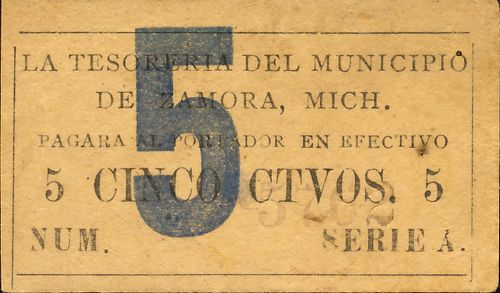
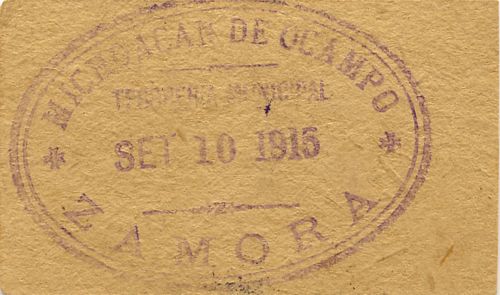
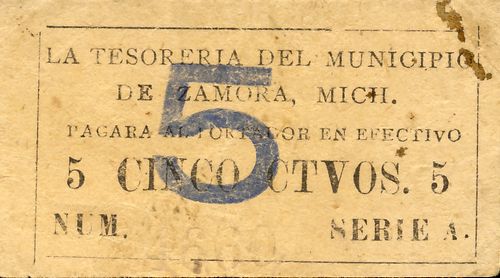
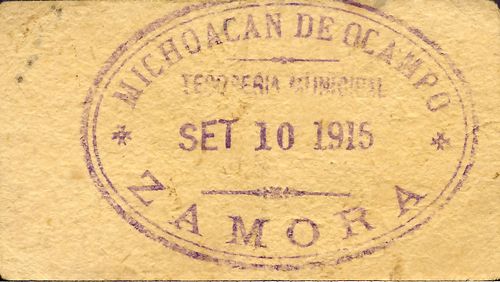
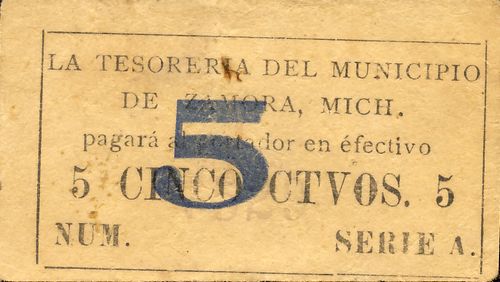
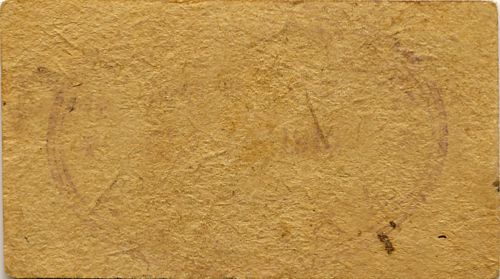
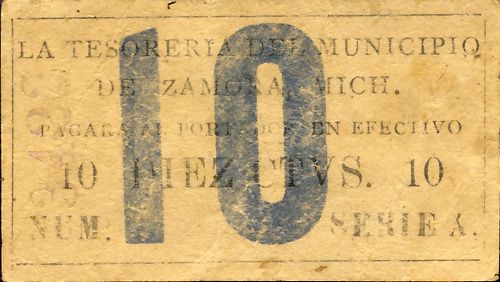
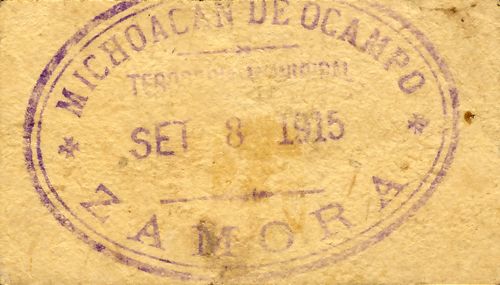
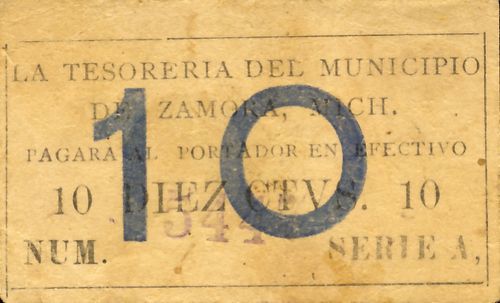
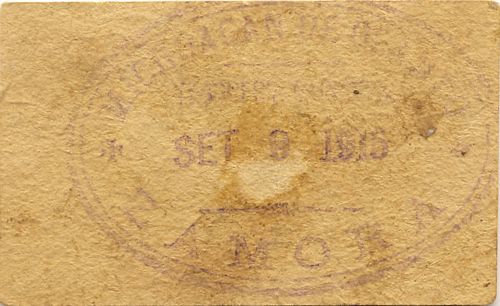
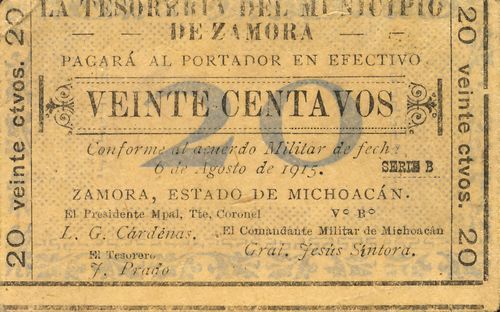
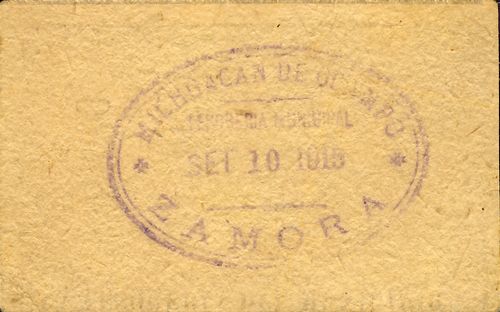
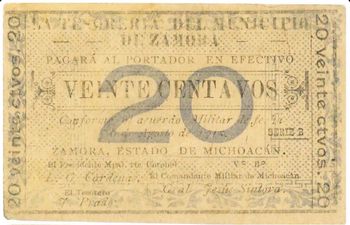
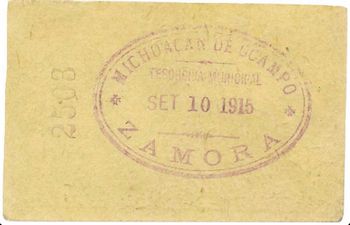
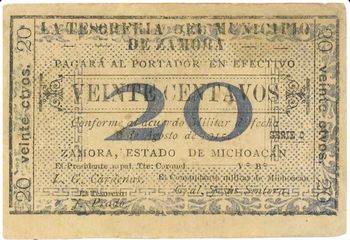
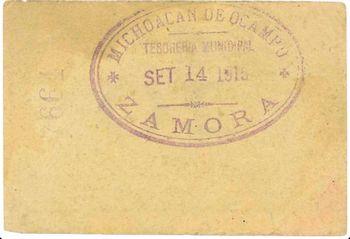
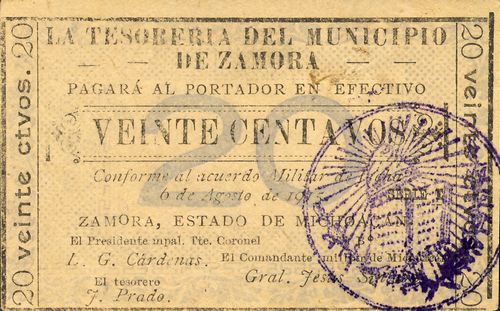
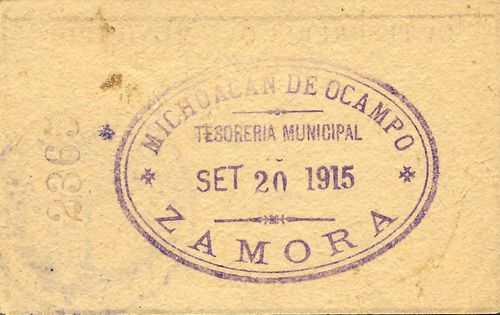
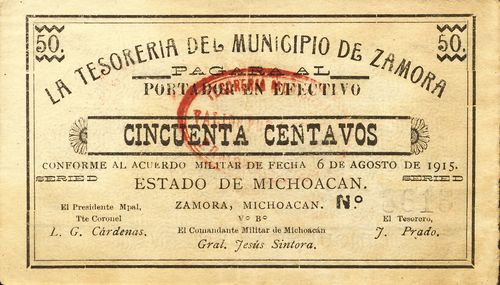
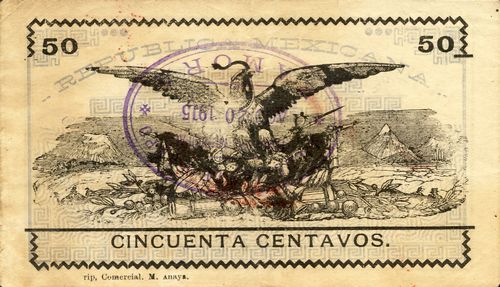
| series | from | to | total number |
total value |
||
| 5c | A | includes number 5762 | ||||
| B | includes numbers 920CNBanxico #11542 to 1397CNBanxico #5262 | |||||
| 10c | A | includes numbers 1410CNBanxico #11543 to 8986CNBanxico #5264 | ||||
| B | includes number 5147CNBanxico #5263 | |||||
| 20c | A | includes numbers 989CNBanxico #5266 to 6465CNBanxico #5272 | ||||
| B | includes numbers 1281CNBanxico #5268 to 7443CNBanxico #5267 | |||||
| C | ||||||
| D | includes number 4716CNBanxico #5277 | |||||
| I | includes number 2266CNBanxico #5276 | |||||
| 25c | includes number 2635 | |||||
| 50c | A | includes numbers 706 to 4267CNBanxico #7179 | ||||
| B | ||||||
| D | includes numbers 1842CNBanxico #5280 to 8615 | |||||
| H | includes numbers 1861CNBanxico #11547 to 8185CNBanxico #5278 |
These were printed by the Tipografia Comercial of J. Miguel Anaya, whose printshop was at calle de Mercaderes 29El Heraldo, Zamora, Tomo VII, Año VII, Núm. 31, 31 July 1920, and which printed the local newspaper El Heraldo.
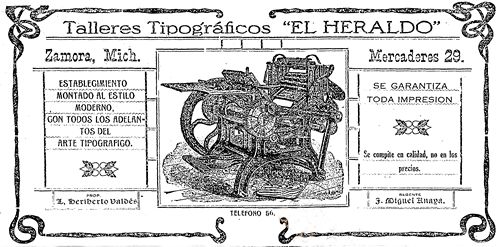 They carry datestamps from 8 September to 20 September. On 10 September Síntora received a reinforcement of 400 men from Villa’s División del Norte but on 23 September Constitutionalist troops took over Zamora and Síntora had to withdraw his troops towards the south. So these notes will have been short-lived.
They carry datestamps from 8 September to 20 September. On 10 September Síntora received a reinforcement of 400 men from Villa’s División del Norte but on 23 September Constitutionalist troops took over Zamora and Síntora had to withdraw his troops towards the south. So these notes will have been short-lived.
(based on "Report of Hacienda Los Espinos Paper Money" by Ricardo Vargas Verduzco, USMexNA journal December 2015)
